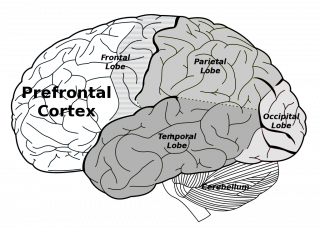The Real Reason Why People Are Opposed to Change
Industry 4.0, digital transformation, and digitization: these change initiatives have been buzzing around the internet and sometimes it’s hard to see whether they are as big of a deal as they seem or if they are just popular buzzwords.
 But change is coming, if it’s not already here.
But change is coming, if it’s not already here.
So what exactly is digital transformation? Digital transformation is the change associated with the application of digital technology in transforming manual digital industrial processes.
It’s deeper than just implementing digital solutions, it’s a radical cultural change. This falls under the umbrella of Industry 4.0, where companies are adopting digital practices at a rapid pace.
In fact, 76% of industrial manufacturers believe they will adopt Industry 4.0 just within the next 5 years. The concepts run deeper than just the words; this involves upskilling people, changing job structure, and transforming operations.
Why are companies rapidly adopting digital technologies? From cost and mistake reduction to easier forms of communication, it provides a multitude of benefits. Words are cheap but the expected numbers suggest the magnitude of what’s happening: Industrial product companies anticipate a 35% increase in revenue, 43% reduction in costs, and a 56% gain in efficiency just by implementing digital solutions.
Even with all of these benefits, McKinsey found that 84% of CEOs are involved in and committed to transformational change yet 45% of frontline employees in larger companies find it more challenging. You might be wondering why there is such opposition to digital transformation with all of the anticipated positive effects.
One major answer is often forgotten within the flurry of conversation about this topic: people are the main driver of change. Digital transformation, bottom line, relies on the people. We need to look to how people are reacting to digital transformation.
Why is there such a disparity? We need to look into the psychology behind digital transformation for the answer.
Let’s start by looking at the average age of manufacturing workers. According to the Bureau of Labor Statistics 2016 Survey, the median age is 44.5 and the majority of workers range from 45 to 54 years old. In the midst of digital transformation in the manufacturing sector, we are looking at digital adopters not digital natives.
There are several factors that explain the difference between these two groups.

Digital literacy is a big one. Some digital adopters might take a little while to learn the basic functions of a smart device while digital natives are more likely be able to pick up an iPad and know most, if not all, the functions and tricks without any training or direction. At the same time, there is a major cultural difference between a generation who has used advanced technology for most of their lives versus an older generation who have had less experience with it.
Another factor is that change is difficult, especially for digital adopters — our brains are wired in a way that makes disruption to patterns in our life difficult to deal with. Especially when a worker has been doing things a certain way throughout most of their working life, those actions become habits and habits are difficult to break.

This goes back into how the brain operates, habitual actions are effortless and take low energy for everyday actions. This leaves energy for the prefrontal cortex to process new information and more complex decisions in day-to-day life. When a workplace digitally transforms, workers often have to change habits in order to adapt into these new digital business processes.
How do you ease the lasting effect of an ingrained habit? Let’s look at some ways to make digital transformation an easier transition:
- Deploy transformation on tools they are already familiar with, for example, on iPhones, iPads, or apps designed in a way that people would be familiar with.
- Keep steps simple and straightforward. We help streamline what employers want workers to do so it’s as straightforward as can be.
- Provide a direct benefit to users. With Parsable, workers don’t need to separate collecting data and executing work. This means that data is easier to collect and work gets done faster.
- Continuously solicit feedback in the digital solution and in-person. You can make workers part of the process by embracing people’s need to talk about the change that is happening and see their suggestions being implemented.
Digital transformation is as difficult as any change can be. When we get down to it, digital transformation completely relies on the people themselves. A push against digital change could be pure stubbornness but it also comes from how our brains are wired with habitual actions and patterns.
If you’re still curious, check out our Industry 4.0 infographic to see how companies utilize Parsable to make rapid transformation happen in a way that eases digital adopters into a new way of working.







